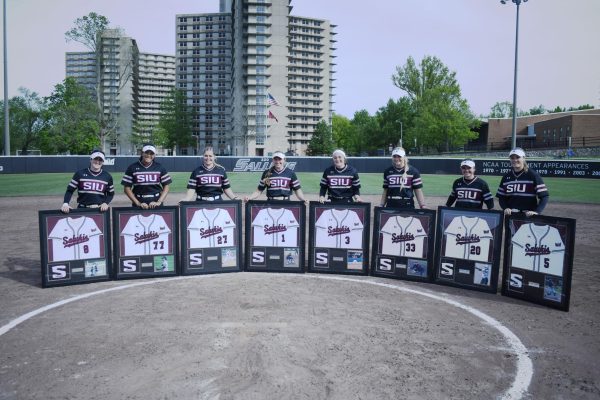“Drive My Car” is one of 2021s Best Films
“Drive My Car” is one of 2021s Best Films
While foreign filmmakers have been making excellent work since the creation of the medium itself, it has been a long and arduous journey to get them fully recognized or appreciated in the West. Director Bong Joon-ho’s “Parasite” changed the Academy Award landscape by being the first foreign film to ever receive the Best Picture award. “Parasite” wasn’t just recognized in awards circuits. Today it is all over lists of “the greatest films of all time” and can be found as the current 35th highest rated film on IMDb as well as the No. 1 highest rated film on Letterboxd.
This kind of unanimous praise has since opened doors for all kinds of foreign films to be discussed as best of the year contenders. The 2022 Oscars continue the trend with the Japanese film “Drive My Car” also being nominated for Best Motion Picture of the Year, Best Achievement in Directing, Best Adapted Screenplay, as well as Best International Feature.
“Drive My Car” is from director Ryûsuke Hamaguchi and is a loose adaptation of the works of the Japanese novelist Haruki Murakami. It follows the protagonist Yûsuke Kafuku portrayed by actor Hidetoshi Nishijima, a playwright who is dealing with the unexpected death of his wife while directing a production of “Uncle Vanya”.
Advertisement
The film immediately distinguishes itself as a highly emotional work, exploring the complex dynamics of marriage and love, among many other equally daunting subjects. Kafuku finds himself struggling to come to terms with the secrets that his wife has left behind, two years after her death. Although she is not present in most of the film, her shadow is constantly looming over him.
Kafuku has a strong relationship with his bright red Saab 900, a luxury car that is the titular piece of iconography of the film. We see many amazing extended sequences of the car driving along highways, which immediately communicates to the audience why driving is so cathartic for him. Early on he is designated a driver against his will, which creates one of the most striking relationships of the film. The car also is one of the few pops of color we see, which makes it even more appealing to the eye.
The film doesn’t truly “start” until about 40 minutes in, when the title sequence finally begins. This first 40 minutes can be considered the prologue, which is one of the many aspects that set it apart from other films that I have seen this year. It is structured as an epic but defies most of the traditional genre trappings of other films within the same category. “Drive My Car” runs at almost three hours long, but every moment felt meaningful and necessary, I was never bored at any point.
It takes place in Hiroshima, Japan, and boasts a seemingly endless stream of beautiful landscapes that compliment the film’s quiet and somber tone. The camerawork and framing are tight and precise, but still extremely emotive. There are many shots of rooms and landscapes that have so many lines of symmetry it’s guaranteed to give the viewer a boost of serotonin at the sight of them, which is greatly appreciated when juxtaposed with the mostly somber story. But even aside from the beautiful countryside of Hiroshima, it manages to even make things as banal as a trash compactor seem beautiful, thanks to the amazing cinematography by Hidetoshi Shinomiya.
The score is also a standout, done by composer Eiko Ishibashi. It’s an orchestral piece with a lot of jazz influences and compliments the film’s laid-back nature. Although it’s used sparingly, it makes it pop even more when it does come in. I’ve already listened extensively since finishing the film and only appreciate it more with each listen.
Scenes are filled with gaps of silence, which is not commonly found in most modern filmmaking, so it was a breath of fresh air. But the silence never felt boring or pretentious. There was always emotion packed into these moments, as they were commonly placed before or after something striking being said or shown.
Another aspect that made it stand out for me is its relationship with sadness and grief. It has a distinct melancholic tone and has a lot to say about how different people react to traumatic events in their life. Its depiction of emptiness in the wake of tragedy was especially heartbreaking. It doesn’t shy away from the gut-wrenching moments but can simultaneously be sweet and beautiful, which is a hard trick to pull off. Depending on who you are and what experiences you bring with you into the film, you may relate to it in a completely different way than someone else watching it. This made me really connect with the film on a personal level, more than anything else I’ve seen in the last year.
Advertisement*
The performances are what really allow these heavy themes to feel genuine and are the best part of the film. Actresses Park Yu-Rim and Tôko Miura, actor Masaki Okada, and Nijima all give standout performances and command every scene they are in. Each character is going through different struggles and are in very different positions, and their performances all make them distinct. There are many extended scenes that progress exclusively through dialogue and each actor can carry the audience through these scenes with their talent alone. You could watch the movie and only focus on a single character each time and be able to pull something different out of it than before.
“Drive My Car” is a challenging yet satisfying film and I would recommend anyone interested in foreign or Japanese cinema to give it a chance. It may not be the most crowd-pleasing film of the year, but it most certainly is one of the most memorable. Upon finishing it, I immediately knew that it was something special and has quickly become one of my favorites of 2021.
Staff reporter Zaden Dennis can be reached at [email protected] and you can find his other reviews at letterboxd.com/Zadenator. To stay up to date with all your Southern Illinois news follow the Daily Egyptian on Facebook and Twitter.
Advertisement














